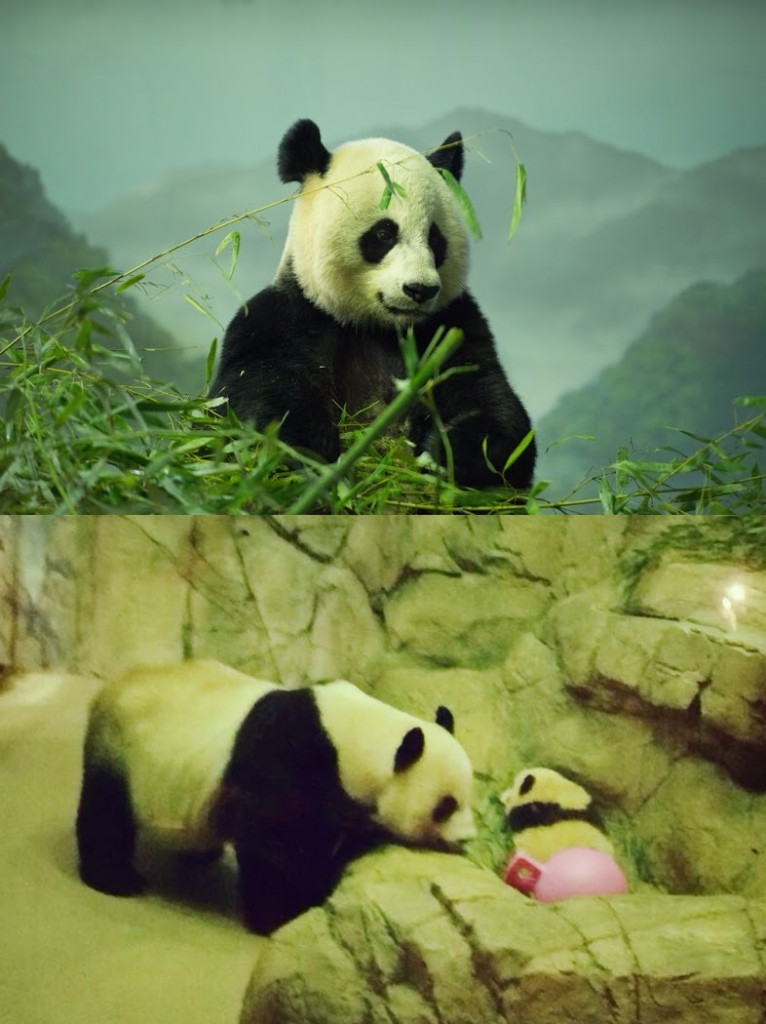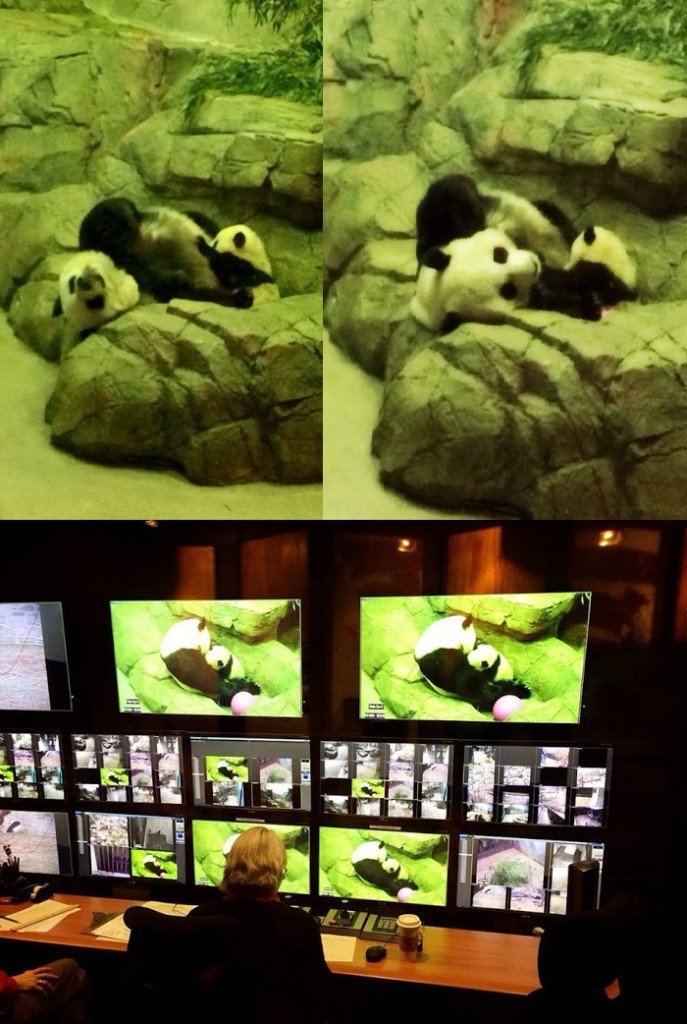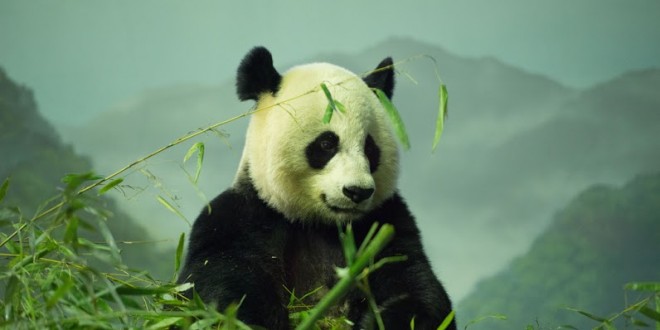By Tamara Treichel
Photo Credit: Abby Wood, Smithsonian Zoo
Washington, D.C. – Washington has become the residence of its latest goodwill ambassador from China – only this “ambassador” looks and acts differently from what one may expect. She is completely covered in white and black fur and prefers to snack on bamboo all day long instead of actively engaging in any PR.
Her name is Bao Bao.

Bao Bao, whose name means “treasure” in Chinese, was born on Aug. 23, 2013 to the National Zoo’s giant pandas Mei Xiang and Tian Tian. She made her highly anticipated first public appearance on Jan. 18, 2014. Washington’s “debutante” graced the headlines of Washington’s newspapers upon this occasion. Bao Bao was, and to a certain extent remains, big news.
The Smithsonian National Zoo’s giant panda keeper Nicole MacCorkle, who has been at the Smithsonian’s National Zoo since 1998 said that Bao Bao had over 18,000 visitors the first weekend she was on public display. MacCorkle also revealed how the National Zoo carefully prepared for Bao Bao’s exciting red-letter day.

“I took my two daughters to see Bao Bao on 1/11. We were lucky because the mom panda had just finished eating herself, and she went over to the sleeping baby (Bao Bao) and started waking her by moving her around with her nose. The the mom flipped herself over so Bao Bao can climb on her and start drinking milk. I’m not particularly a crazy panda fan, but it was truly a touching moment and I couldn’t resist but buy three baby panda stuffed animal on our way out of the zoo! Totally felt like this mommy panda had strong maternal instincts and that Bao Bao was in good hands.” Sakiko Ishihara
“We had closed the Panda House and surrounding areas prior to Bao Bao’s birth. We reopened the building, a little at a time, prior to Bao Bao’s debut,” MacCorkle recalled. “We started first with staff previews, and then expanded to volunteers, and then FONZ [Friends of the National Zoo] members. That way Bao Bao was acclimated to the extra noise and activity around her. Mei Xiang [Bao Bao’s mother] is used to the crowds, and doesn’t react, so her calm demeanor helped Bao Bao reach this milestone.”
When asked how Bao Bao’s debut compared to the National Zoo’s former giant panda superstar’s, Tai Shan, MacCorkle seemed satisfied with the results. “We had a great initial turnout, and continue to have lots of people trying to catch a glimpse of Bao Bao, and we aren’t doing ticketed viewing like we did with Tai Shan. Things are a bit different, but our Guest Services staff is terrific in keeping the crowds happy.”
Bao Bao was named by a public vote on Smithsonian.com. “Five names were submitted for voting – one by giant panda keepers here, one by giant panda keepers in the reserve where Bao Bao will someday live, and where her parents were born, one by FONZ members, one by the U.S. ambassador to China, and one by the Chinese ambassador to the U.S.,” MacCorkle said.
Asian Fortune also asked MacCorkle about the agreement with China regarding the giant pandas and Bao Bao’s fate once she is grown up. “Our pandas are on loan from China,” MacCorkle said. “The adults, Mei Xiang and Tian Tian, are here until 2015. At that point, they will either return to China, or we will re-negotiate our agreement, as we did when their first loan agreement expired in 2010. Bao Bao will move to China when she is four years old, per our agreement. Tai Shan moved to China in 2010. Although our original agreement stated that any cubs would go to China at age two, we were able to negotiate to keep Tai Shan here for two more years,” she said, adding that giant pandas are not sexually mature until between the ages of four and seven.
The giant panda keeper admitted that breeding pandas in captivity is challenging. “Females are only fertile for 1-2 days each year,” she said. “In the wild, they would often have the opportunity to breed with more than one male during that time. In captivity in the United States, we house pairs of pandas, so they only have a few hours to attempt to breed. If no successful breeding behaviors are observed, we must switch our efforts to an artificial insemination, while working against the fertility window. In 2013, we gave Tian Tian and Mei Xiang only a few hours together. At that point, our veterinarians and reproductive scientists, as well as our Chinese colleague, Dr. Tang, prepared to perform an artificial insemination.”
As a zoo staff member, MacCorkle says she rarely touches the pandas. ”We handle Bao Bao for management purposes only, moving her from place to place by carrying her, much like her mom would. At this point, she is fully mobile on her own, and is beginning to follow a target and voice commands, so we are becoming increasingly hands off with her,” MacCorkle said.
Furthermore, she suggested that the feel of panda fur may be a disappointing experience for those who are expecting the animal’s coat to be soft and light to the touch. In fact, panda fur feels nothing like cashmere. “Giant pandas have oily, wooly coats, which help to insulate them against the cold, often wet climate of their native habitat,” the giant panda keeper said.
Sakiko Ishihara, a Japanese resident in the D.C. metro area, took her two daughters to visit Bao Bao in January. She was fortunate to witness a very special moment between Mei Xiang and her offspring Bao Bao: mama bear nursing her cub.
“We were lucky because the mom panda (Mei Xiang) had just finished eating herself, and she went over to the sleeping baby (Bao Bao) and started waking her by moving her around with her nose. The mom flipped herself over so Bao Bao could climb on her and start drinking milk,” Ishihara told Asian Fortune. “Totally felt like this mommy panda had strong maternal instincts and that Bao Bao was in good hands.” (Or paws.)
Ishihara admitted that although she was not an avid panda fan, she was touched by the experience. So touched, in fact, that she succumbed to the temptation of buying three baby panda stuffed animals upon leaving the zoo.
 Asian Fortune Your source for all things Asian American
Asian Fortune Your source for all things Asian American
